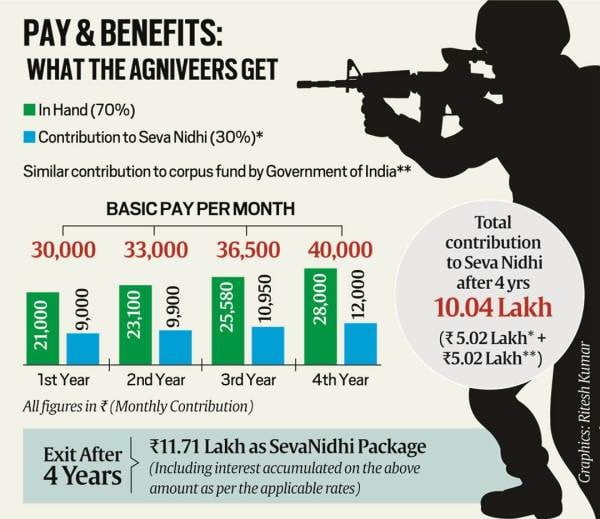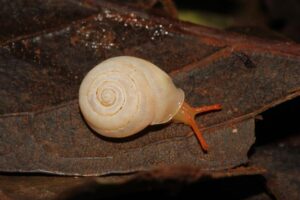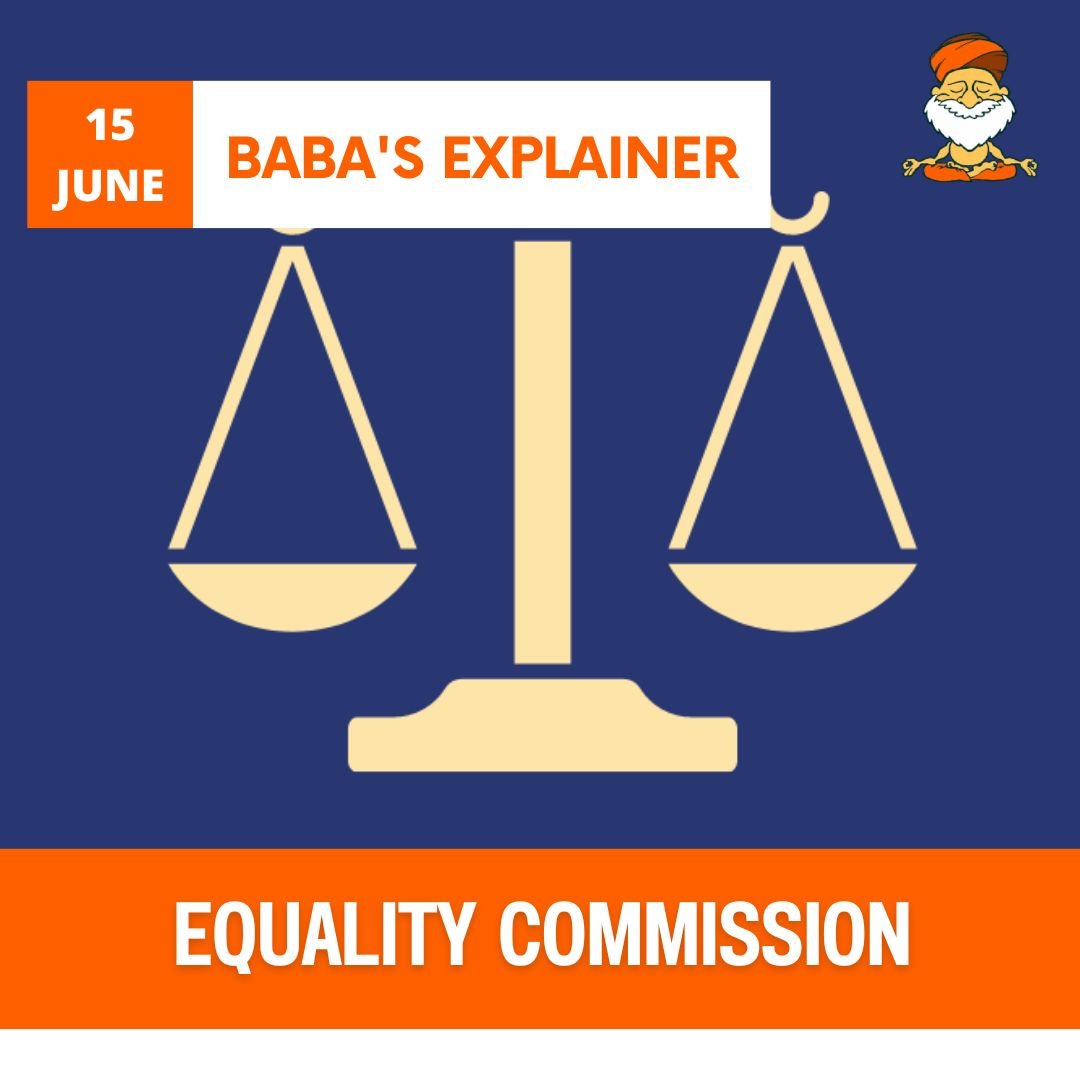IASbaba's Daily Current Affairs Analysis
Archives
(PRELIMS & MAINS Focus)
Syllabus
- Prelims – Government Schemes – Current Affairs
- Mains – GS 3 (Security)
In News: The GoI unveiled its new Agnipath scheme for recruiting soldiers across the three services
- The soldiers recruited under the scheme will be called Agniveers.
What is the Agnipath scheme?
- Under the new scheme, around 45,000 to 50,000 soldiers will be recruited annually, and most will leave the service in just four years.
- Of the total annual recruits, only 25 percent will be allowed to continue for another 15 years under permanent commission.
What is the eligibility criterion?
- The new system is only for personnel below officer ranks
- Under the Agnipath scheme, aspirants between the ages of 17.5 years and 21 years will be eligible to apply.
- The recruitment standards will remain the same, and recruitment will be done twice a year through rallies.
What happens after selection?
- Once selected, the aspirants will go through training for six months and then will be deployed for three and a half years.
- During this period, they will get a starting salary of Rs 30,000, along with additional benefits which will go up to Rs 40,000 by the end of the four-year service.
- 30 per cent of their salary will be set aside under a Seva Nidhi programme, and the government will contribute an equal amount every month, and it will also accrue interest.
- At the end of the four-year period, each soldier will get Rs 11.71 lakh as a lump sum amount, which will be tax-free.
- They will also get an Rs 48 lakh life insurance cover for the four years.
- In case of death, the payout will be over Rs 1 crore, including pay for the unserved tenure.
- For those who are re-selected, the initial four-year period will not be considered for retirement benefits.
- Recruitment will begin within 90 days under the scheme which will bring “all India, all class” recruitment to the services.

Benefits
- The average age in the forces is 32 years today, which will go down to 26 in six to seven years, the scheme envisions.
- It will create “future-ready” soldiers
- This is especially significant for the Army, where the regiment system has region and caste bases, and with time that will be eliminated to allow anybody from any caste, region, class or religious background to become part of existing regiments.
- The move will make the permanent force levels much leaner for the over 13-lakh strong armed forces in the country.
- This will, in turn, considerably reduce the defence pension bill, which has been a major concern for governments for many years.
- It will increase employment opportunities and because of the skills and experience acquired during the four-year service such soldiers will get employment in various fields.
Source: Indian Express
Previous Year Questions
Q.1) With reference to Pradhan Mantri Kaushal Vikas Yojana, consider the following statements: (2018)
- It is the flagship scheme of the Ministry of Labour and Employment.
- It, among other things will also impart training in soft skills, entrepreneurship, financial and digital literacy.
- It aims to align the competencies of the unregulated workforce of the country to the National Skill Qualification Framework.
Which of the statements given above is/are correct?
- 1 and 3 only
- 2 only
- 2 and 3 only
- 1, 2, and 3
Syllabus
- Prelims – Economy Current Affairs
- Mains – GS 3 (Economy)
In News: Periodic Labour Force Survey (PLFS) for 2020-21 was released by the Ministry of Statistics and Programme Implementation
Findings
- The unemployment rate saw a decrease of 0.6% and fell to 4.2% in 2020-21, compared with 4.8% in 2019-20
- Rural areas recorded an unemployment rate of 3% and urban areas recorded an unemployment rate of 6.7%.
- The National Statistical Office (NSO) uses “rotational panel sampling design” in urban areas to assess the Labour Force Participation Rate (LFPR), Worker Population Ratio (WPR) and the unemployment rate, and visits selected households in urban areas four times.
- The LFPR, the percentage of persons in the labour force (that is, working or seeking work or available for work) in the population was 6% during 2020-21. It was 40.1% in the previous year.
- The WPR was 39.8%, an increase from 38.2% of the previous year.
- The migration rate is 28.9%. The migration rate among women was 48% and 47.8% in rural and urban areas,

What is the Periodic Labour Force Survey?
- The NSO launched the Periodic Labour Force Survey (PLFS) in April 2017.
The objective of PLFS is primarily twofold:
- To estimate the key employment and unemployment indicators namely Worker Population Ratio, Labour Force Participation Rate, Unemployment Rate in the short time interval of three months for the urban areas only in the Current Weekly Status (CWS)
- To estimate employment and unemployment indicators in both usual Status and CWS in both rural and urban areas annually.
Key Terms
Unemployment Rate (UR):
- It is defined as the percentage of persons unemployed among the persons in the labour force.
Labour Force Participation Rate (LFPR):
- It is defined as the percentage of persons in the labour force (i.e. working or seeking or available for work) in the population.
Worker Population Ratio (WPR):
- It is defined as the percentage of employed persons in the population.
National Statistical Office
- It is the central statistical agency of the Government mandated under the Statistical Services Act 1980 under the Ministry of Statistics and Programme Implementation.
- It is responsible for the development of arrangements for providing statistical information services to meet the needs of the Government and other users for information on which to base policy, planning, monitoring and management decisions.
Source: The Hindu
Previous Year Questions
Q.1) As per the NSSO 70th Round “Situation Assessment Survey of Agricultural Households”, consider the following statements: (2018)
- Rajasthan has the highest percentage share of agricultural households among its rural households.
- Out of the total agricultural households in the country, a little over 60 percent belong to OBCs.
- In Kerala, a little over 60 percent of agricultural households reported to have received maximum income from sources other than agricultural activities.
Which of the statements given above is/are correct?
- 2 and 3 only
- 2 only
- 1 and 3 only
- 1, 2 and 3
Syllabus
- Prelims – Geography
In News: India’s newest recorded snail named after Western Ghats
- The Western Ghats of Maharashtra have yielded a carnivorous land snail new to the world of science.
- The Haploptychius sahyadriensis is endemic to the Vishalgad Conservation Reserve in Maharashtra’s Kolhapur district
- The Haploptychius sahyadriensis, recorded from the northern Western Ghats of Maharashtra, is the third member of the genus Haploptychius.
- The other two – H. andamanicus and H. pfeifferi – were recorded in the Andaman and Nicobar Islands in the 1860s.
- It is named after the type locality of the species in the northern part of the Western Ghats, which is Sahyadri in Sanskrit
- The ‘Sahyadri snail’ is distinguished from other Indian and Southeast Asia’s Haploptychius in having a sub-oblique helical shell, low spire and presence of a strong parietal lamella.
- The new species also has a unique genital anatomy

Source: The Hindu
Syllabus
- Prelims – Science and Technology
- Mains – GS 3 (Science and Technology)
In News: A senior engineer at Google claimed that the company’s artificial intelligence-based chatbot Language Model for Dialogue Applications (LaMDA) had become “sentient”
- The claims have spurred a debate on the capabilities and limitations of AI-based chatbots
What is LaMDA?
- LaMDA is short for ‘Language Model for Dialogue Applications’, Google’s modern conversational agent enabled with a neural network capable of deep learning.
- Google first announced LaMDA at its flagship developer conference I/O in 2021 as its generative language model for dialogue applications which can ensure that the Assistant would be able to converse on any topic.
- In simple terms, LaMDA can have a discussion based on a user’s inputs
- In 2022 Google announced LaMDA 2.0 which further builds on LaMDA 1.0.
- The new model can possibly take an idea and generate “imaginative and relevant descriptions”, stay on a particular topic even if a user strays off-topic, and can suggest a list of things needed for a specified activity.
What is a neural network?
- A neural network is an AI tech that attempts to mimic the web of neurons in the brain to learn and behave like humans.
Is the technology dangerous?
- The challenges of AI metamorphosing into sentient are far in the future; however, unethical AI perpetuating historical bias and echoing hate speech are the real dangers to watch for.
- While we imagine the machine to have no bias, AI software learning from historical data could inadvertently perpetuate discrimination against the marginalized community.
Source: The Hindu
Previous Year Questions
Q.1) With the present state of development, Artificial Intelligence an effectively do which of the following? (2020)
- Bring down electricity consumption in industrial units.
- Create meaningful short stories and songs.
- Disease diagnosis.
- Text-to-Speech Conversion.
- Wireless transmission of electrical energy.
Select the correct answer using the code given below:
- 1, 2, 3 and 5 only
- 1, 3 and 4 only (UPSC Answer Key)
- 2, 4 and 5 only
- 1, 2, 3, 4 and 5
Syllabus
- Prelims – Government Schemes – Current Affairs
In News: The ‘Bharat Gaurav’ train service from Coimbatore to Shirdi, a first of its kind in the country, was inaugurated at the Coimbatore North Railway Station
Bharat Gaurav scheme
- To promote and attract tourism business, the Indian Railways launched Bharat Gaurav trains that will be operated by private players and run on theme-based circuits.
- Through this policy, which offers operators the “Right of Use” of its rakes and infrastructure, the Railways has liberalised and simplified a part of operations that was otherwise carried out mostly by the Indian Railway Catering and Tourism Corporation (IRCTC).
- While any entity can run these trains, including state governments, it is implied that the policy is targeted at tour operators.
- According to the Bharat Gaurav policy, any operator or service provider, or virtually anyone, can lease trains from Indian Railways to run on a theme-based circuit as a special tourism package.
- The tenure of the arrangement is a minimum of two years and maximum of the codal life of the coach.
- The operator has the freedom to decide the route, the halts, the services provided, and, most importantly, the tariff.
- Anyone can approach Railways to lease the 3033 conventional Integral Coach Factory-design coaches earmarked for this segment.
- These trains cannot be used as ordinary transport trains between an origin and destination.
Source: The Hindu
Previous Year Questions
Q.1) What is the aim of the programme ‘Unnat Bharat Abhiyan’? (2017)
- Achieving 100% literacy by promoting collaboration between voluntary organizations and government’s education system and local communities.
- Connecting institutions of higher education with local communities to address development challenges through appropriate technologies.
- Strengthening India’s scientific research institutions in order to make India a scientific and technological power.
- Developing human capital by allocating special funds for health care and education of rural and urban poor, and organizing skill development programmes and vocational training for them.
Syllabus
- Mains – GS 2 (Social Issues)
Malnutrition
- Malnutrition, in all its forms, includes undernutrition (wasting, stunting, underweight), obesity, and resulting diet-related noncommunicable diseases.
The term malnutrition addresses 3 broad groups of conditions:
- Undernutrition, which includes wasting (low weight-for-height), stunting (low height-for-age) and underweight (low weight-for-age)
- Micronutrient-related malnutrition, which includes micronutrient deficiencies or micronutrient excess; and
- Overweight, obesity and diet-related noncommunicable diseases (such as heart disease, stroke, diabetes and some cancers).
Malnutrition is a chronic problem and a longstanding challenge for the public administration of India.
Stats
- The National Family Health Survey (NFHS-5) has shown marginal improvement in different nutrition indicators, indicating that the pace of progress is slow.
- While there was some reduction in stunting rates (35.5% from 38.4% in NFHS-4) 13 States or Union Territories have seen an increase in stunted children since NFHS-4
- The NFHS-5 survey indicates that more than 57% of women (15-49 years) and over 67% children (six-59 months) suffer from anaemia.
- Developing countries lose up to 4.05% in GDP per annum due to iron deficiency anaemia; India loses up to 1.18% of GDP annually.
Reasons
- Monoculture agricultural practices: Though India has achieved food security, it has not sufficiently addressed the issue of malnutrition.
- These intensive monoculture agricultural practices can perpetuate the food and nutrition security problem by degrading the quality of land, water and the food derived through them.
- Changing food patterns: Food consumption patterns have changed substantially in India over the past few decades, which has resulted in the disappearance of many nutritious local foods, for example, millets.
- Poverty: It affects the availability of adequate amounts of nutritious food for the most vulnerable populations.
- Lack of sanitation and clean drinking water: poor sanitation, and dangerous hygiene practices increase vulnerability to infectious and water-borne diseases
- Gender injustice: There is a correlation between gender discrimination and poor nutrition.
- Malnourished girls become malnourished adolescents who marry early and have children who become malnourished, and so the cycle continues.
- Inappropriate policies and lax implementation – policies are designed based on real-time data
Measures Taken to Tackle Malnutrition
Integrated Child Development Services (ICDS) Scheme
- It provides a package of six services namely supplementary nutrition, pre-school non-formal education, nutrition & health education, immunization, health check-up and referral services.
National Health Mission (NHM)
- The main programmatic components include health system strengthening in rural and urban areas for – Reproductive-Maternal- Neonatal-Child and Adolescent Health (RMNCH+A), and Communicable and Non-Communicable Diseases.
Mid Day Meal Scheme
- It provides that every child within the age group of six to fourteen years studying in classes I to VIII who enrols and attends the school shall be provided with a hot cooked meal, free of charge every day except on school holidays.
Poshan Abhiyan
- It was approved in 2017.
- It is a multi-ministerial convergence mission with the vision to ensure the attainment of malnutrition free India by 2022.
Indira Gandhi Matritva Sahyog Yojna (IGMSY)
- The scheme aims to contribute to a better enabling environment by providing cash incentives for improved health and nutrition to pregnant and lactating mothers.
Way forward
Financial commitment
- Increase investment in women and children’s health and nutrition to ensure their sustainable development and improved quality of life.
- Saksham Anganwadi and the Prime Minister’s Overarching Scheme for Holistic Nourishment (POSHAN) 2.0 programme have seen only a marginal increase in budgetary allocation
Outcome-oriented approach
- Strict monitoring and interventions by parliamentarians in their constituencies
- Direct engagement with nutritionally vulnerable groups and contribute toward ensuring last-mile delivery of key nutrition services and interventions.
Diversification:
- Public Distribution System should be diversified, to include millets
Source: The Hindu
Baba’s Explainer – Equality Commission

Syllabus
- GS-2: Functions and responsibilities of the Union and the States, issues and challenges pertaining to the federal structure
Context: The demand for an Equality Commission have been proposed from time to time by academics and activists, to end social discrimination.
Read Complete Details on Equality Commission
Daily Practice MCQs
Q.1) Consider the following statements about ‘Agnipath scheme’.
- Under the new scheme, around 45,000 to 50,000 soldiers will be recruited annually
- Only the aspirants between the ages of 17.5 years and 21 years will be eligible to apply
- 30 per cent of the soldier salary will be set aside under a Seva Nidhi programme
Choose the correct statements:
- 1, 2 and 3
- 2 and 3
- 1 and 2
- 1 and 3
Q.2) Consider the following statements
- Periodic Labour Force Survey (PLFS) is published by the Ministry of Labour & Employment
- PLFS has been published annually since the 1991 reforms
- The Labour Force Participation Rate includes person seeking or available for work
Choose the incorrect statements:
- 1 only
- 2 only
- 1 and 2
- 1, 2 and 3
Q.3) Consider the following statements
- Bharat Gaurav trains are operated by private players
- Through Bharat Gaurav schemes Railways offers operators the Right of Use of its rakes and infrastructure
- It aims to promote tourism business and run on theme-based circuits
Choose the correct statements:
- 1, 2 and 3
- 3 only
- 1 and 2
- 2 and 3
Comment the answers to the above questions in the comment section below!!
ANSWERS FOR ’15th JUNE 2022 – Daily Practice MCQs’ will be updated along with tomorrow’s Daily Current Affairs.
ANSWERS FOR 14th JUNE 2022 – Daily Practice MCQs
Q.1) – b
Q.2) – a
Q.3) – d











